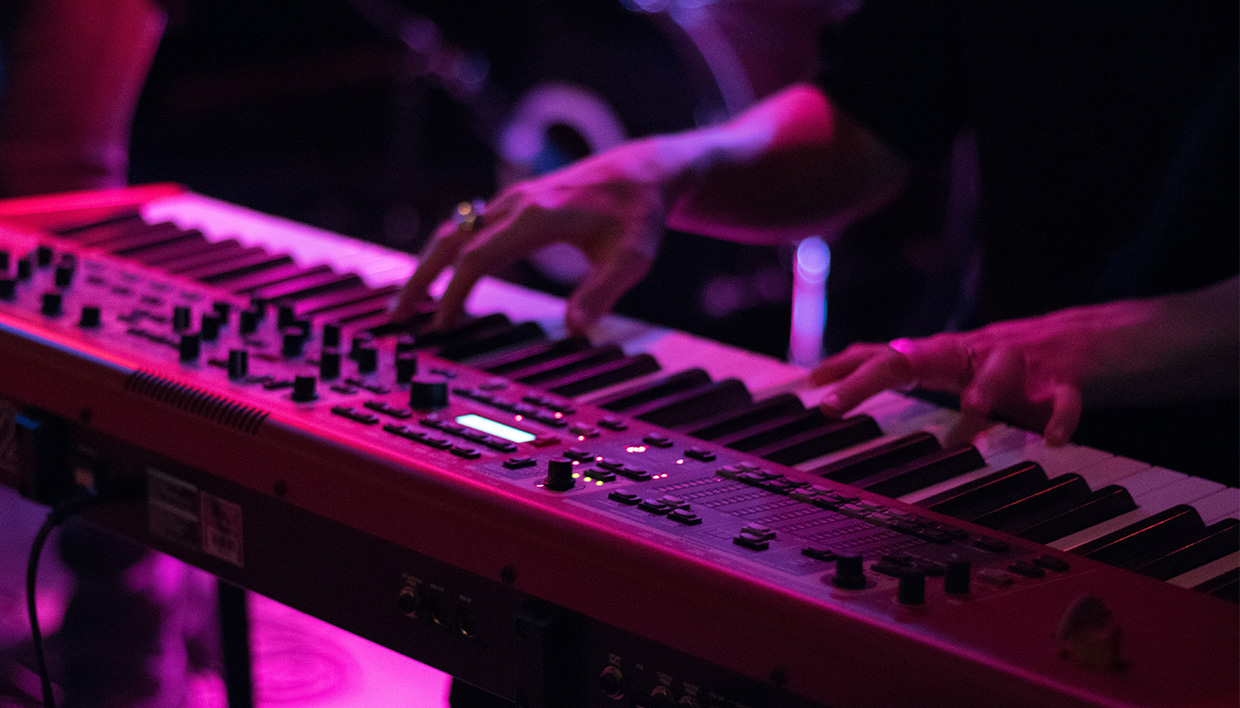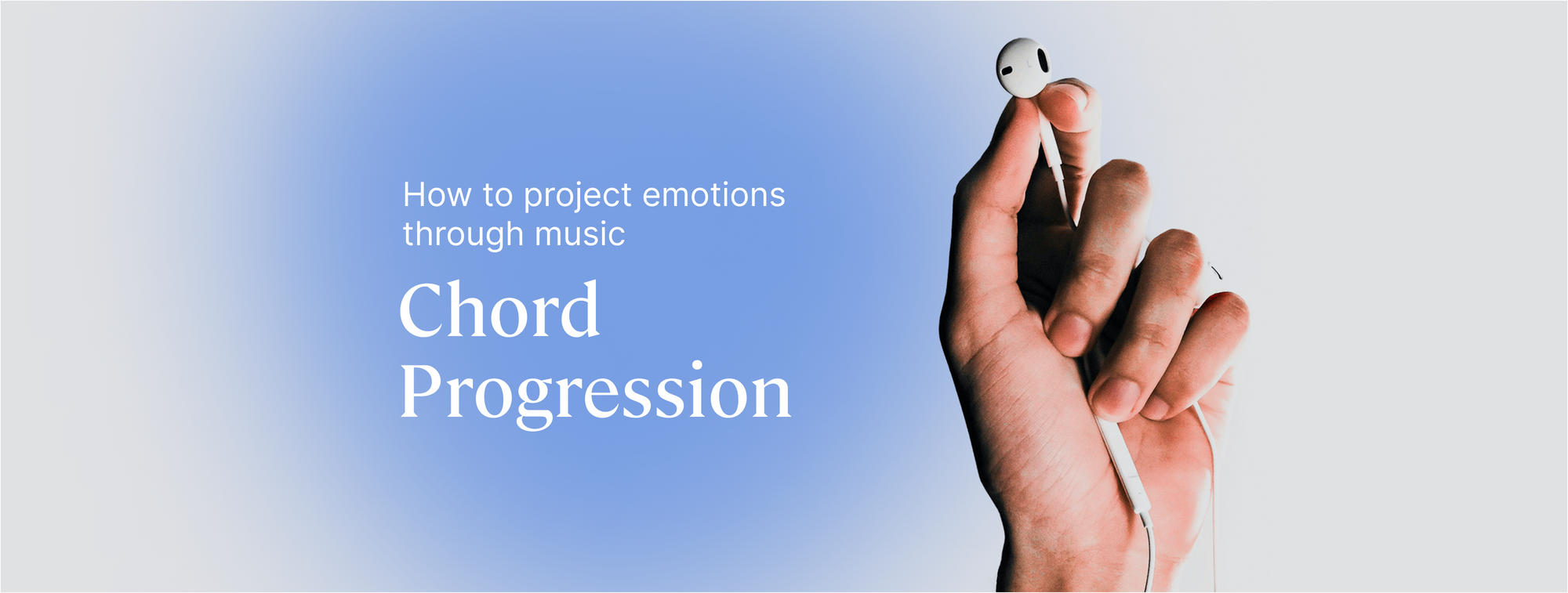Minor chord progressions create a melancholic atmosphere in music, evoking emotions of depth and introspection. By combining minor chords in specific sequences, musicians can convey a sense of tension, sadness, or mystery in their compositions.
These progressions often include chords like Am, Dm, and Em, among others, to establish a minor tonality. Understanding the various ways in which minor chords can be arranged and resolved in a progression is essential for crafting evocative and compelling music.
Whether used in pop, rock, jazz, or classical genres, minor chord progressions add a nuanced layer of complexity to musical compositions, resonating with listeners on an emotional level. Mastering the art of minor chord progressions can elevate a musician’s work to new heights of creativity and expression.

Credit: blog.flat.io
The Emotional Power Of Minor Chord Progressions
Understanding Minor Keys
Minor keys create a sense of melancholy, mystery, and depth.
Conveying Emotion Through Minor Chords
Minor chords evoke feelings of sadness, introspection, and longing in listeners.

Credit: blog.native-instruments.com
Popular Minor Chord Progressions
Minor chord progressions are essential in creating emotional depth and complexity in music. By exploring popular minor chord progressions, musicians can evoke a range of feelings from melancholy to suspense. Let’s delve into two main categories of popular minor chord progressions: Natural Minor Progressions and Harmonic Minor Progressions.
Natural Minor Progressions
The Natural Minor Progressions are built on the classic minor scale, creating a somber and introspective tone. Common progressions like i-iv-V or i-iv-VI include the tonic, subdominant, and dominant chords. These progressions are widely used in genres like jazz, pop, and rock music.
Harmonic Minor Progressions
Harmonic Minor Progressions introduce a unique twist by raising the seventh note of the natural minor scale. This alteration creates a sense of tension and drama, commonly found in classical and flamenco music. Progressions like i-VII-VI-V add a touch of exoticism to compositions.
Creating Atmosphere With Minor Chord Progressions
Minor chord progressions can play a crucial role in establishing the mood and atmosphere of a musical piece. The use of minor chords in composition adds depth and emotion, allowing the music to evoke a range of feelings from melancholy and introspection to tension and unease. Understanding how to utilize minor chord progressions effectively can significantly enhance the emotional impact of a musical composition.
Using Minor Chords In Composition
For composers and musicians, incorporating minor chords into their compositions opens up a world of expressive possibilities. Minor chords bring a sense of complexity and depth to the music, allowing for the conveyance of subtle nuances of emotion. By strategically integrating minor chord progressions, composers can create rich, evocative musical landscapes that resonate with the listener on a profound level.
Building Tension And Release
One of the most powerful aspects of utilizing minor chord progressions is the ability to build tension and release within a musical piece. The inherent dissonance and emotive qualities of minor chords can be harnessed to create a sense of anticipation and unease, followed by moments of resolution and catharsis. This dynamic interplay of tension and release keeps the listener engaged and captivated, forming a compelling emotional journey throughout the composition.
Minor Chord Progressions In Different Genres
Minor chord progressions are a crucial element in a wide range of music genres. From the soulful melodies of Blues and Jazz to the catchy hooks in Pop and Rock, understanding how minor chords work within each genre can greatly enhance your musical compositions. In this blog post, we’ll explore the unique characteristics of minor chord progressions in various genres, providing you with valuable insights and inspiration for your own musical journey.
Blues And Jazz
In the world of Blues and Jazz, minor chord progressions play a central role in creating a melancholic and soulful atmosphere. These genres heavily rely on the emotional impact of minor chords to convey a range of feelings, from sadness to longing and even anticipation. Blues and Jazz often feature the classic 12-bar blues progression, where a combination of major and minor chords create a distinct pattern that is instantly recognizable. The minor chords used in Blues and Jazz add a touch of complexity and depth, allowing musicians to express their emotions through the music.
Pop And Rock
Pop and Rock songs are known for their energetic and catchy melodies, and minor chord progressions have a significant role in shaping these tunes. While major chords dominate the pop music scene, minor chords are strategically used to create contrast and add emotional depth to the songs. Many Pop and Rock hits feature verses with minor chord progressions that build tension, leading to the uplifting and triumphant chorus sections filled with major chords. This dynamic shift between minor and major chords creates a powerful impact on the listeners, making the songs more memorable and emotionally charged.
Mastering Minor Chord Progressions
Unlock the secrets of Minor Chord Progressions and take your music to the next level with expert guidance. Learn the intricacies of crafting evocative and emotive progressions that will add depth and complexity to your compositions. Mastering Minor Chord Progressions will elevate your musical prowess and captivate your audience.
When it comes to creating beautiful and emotive music, mastering minor chord progressions is an essential skill for any musician. Minor chords have a rich and melancholic sound that can evoke a wide range of emotions. In this section, we will explore some tips and techniques to help you effectively create and use minor chord progressions in your music.
Tips For Effective Minor Progressions
Creating a compelling minor chord progression requires careful consideration of chord choices and their arrangement. Here are some tips to help you craft engaging and interesting minor progressions:
- Vary chord types: Mix different types of minor chords, such as natural minor, harmonic minor, and melodic minor, to add depth and complexity to your progressions.
- Experiment with inversions: Try inverting minor chords to create unique voicings and a more fluid movement between chords.
- Utilize tension and release: Incorporate tension chords, such as diminished or half-diminished chords, in your progressions to build anticipation and release it with resolved chords.
- Consider chord extensions: Add chord extensions like sevenths, ninths, or elevenths to minor chords to create a richer and more vibrant sound.
- Explore chromaticism: Experiment with chromatic notes as passing tones between minor chords to add unexpected flavor and make your progressions stand out.
Experimenting With Minor Chords
Minor chords offer a vast playground for musical exploration and experimentation. Here are some ways you can explore and push the boundaries with minor chords:
- Mix major and minor: Combine major and minor chords in your progressions to create tension and contrast. This technique can create a bittersweet and introspective atmosphere.
- Modal interchange: Borrow chords from parallel major or minor scales to introduce unexpected chord progressions and tonalities.
- Explore different genres: Minor chord progressions are not limited to specific music genres. Experiment with different styles such as blues, rock, jazz, or classical to discover new ways to use minor chords.
- Use pedal tones: Incorporate pedal tones, where a single note is sustained while the chords change, to create a hypnotic and captivating effect.
- Try unconventional chord progressions: Break away from traditional progressions and create your own unique combinations of minor chords to express your musical ideas.
By employing these techniques and continuously experimenting with minor chords, you can unlock a world of creativity and emotion in your music. Remember, mastering minor chord progressions is a journey, so don’t be afraid to explore, take risks, and let your musical intuition guide you.

Credit: blog.flat.io
Frequently Asked Questions On Minor Chord Progressions
What Are Some Good Minor Chord Progressions?
Popular minor chord progressions include i-iv-V, i-VI-III-VII, and i-III-VII-vi. These progressions create a melancholic and emotional feel in music.
What Is The Rule For Minor Chords?
The rule for minor chords is to lower the third note in a major chord by a half step.
What Is The Chord Progression Scale For A Minor?
The chord progression scale for A minor is: Am, Bdim, C, Dm, Em, F, G. These are the primary chords to use in the key of A minor.
What Is The Minor 4 Progression?
The minor 4 progression refers to a chord progression commonly used in music. It involves playing a minor chord followed by a major fourth chord. This progression gives a melancholic and emotional sound to the music.
Conclusion
In the world of music, minor chord progressions offer a depth of emotion and richness. By understanding the role of minor chords and how they can be combined, you can create captivating and evocative musical compositions. Experimenting with minor chord progressions can unlock a world of creative possibilities, adding intrigue and complexity to your musical arrangements.
Dive into the emotive power of minor chord progressions and elevate your music to new heights.